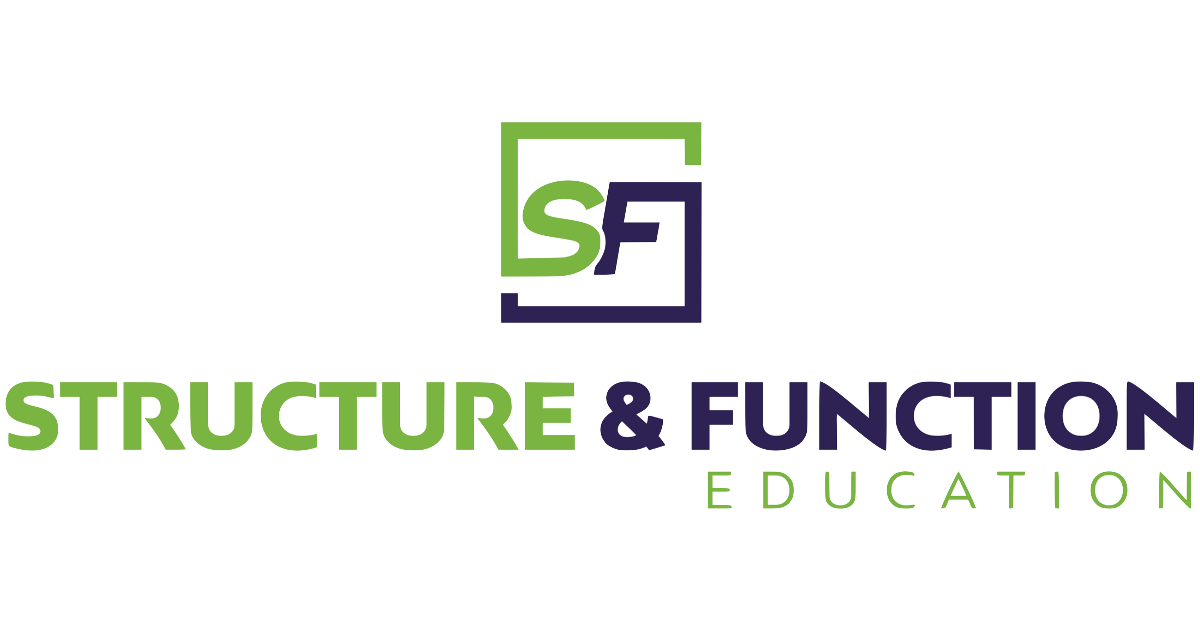
Bridging The Gap Chapter 8: The Top 5 Considerations for Optimal Function.
Who is this course for?
This course on the top 5 considerations for optimal function is intended for healthcare practitioners as well as strength and conditioning professionals who are looking to improve fundamental programming concepts for their clients. These top 5 considerations are things Sue considers vital for all clients: despite gender, despite sport, and despite position.
In this course, she discusses Posture, Breathing, the Thoracic Spine, the Hips and the Feet and why each of these areas are important not only for the overall health and well-being of your client, but how addressing these areas can set the foundation for an injury prevention program as well. Sue’s Top 5 all inter-relate and create a holistic evaluation and intervention plan to decrease injury and improve performance.
As a therapist or strength coach…
You may deal with young clients who you want to create a solid program for, not only to address current problem areas, but areas that you fear may become an issue down the road as they get older.
Maybe you’re dealing with an older population and sometimes say to yourself, “why wasn’t this addressed years ago?” or “Could we have intervened sooner?”
In either case you have key performance indicators that you look at with each client to determine some baseline of health and movement.
In this course, Sue will walk through you through her Top 5 Considerations for Optimal Function that she addresses with every client. Compare and contrast your Top 5 and be on your way to creating a comprehensive wellness program for every client.
Are you dealing with patients who experience pain and movement dysfunction?
This course will walk you through Posture, the Thoracic Spine, Breath, the Hips, and the Feet and how addressing each of these areas will impact the overall health and well-being of your client.
Do you want to learn ways to improve the results with your clients?
- Understand how the Top 5 considerations can be applied to every person, despite gender, despite sport and despite position
- Learn how these Top 5 things not only impact the biomechanical and musculoskeletal systems, but how they can impact the digestive and autonomic nervous system as well
- Learn a comprehensive approach to addressing key areas within the body that inter-relate and create an overall improved system for handling load
Learn about…
- How static posture relates to dynamic movement
- How the thoracic spine relates to core stability
- How breath can be used as a therapeutic intervention
- How the hips impact core stability and the feet
- How the feet impact the entire kinetic chain
This course is for you if you are you looking to…
Understand how static posture relates to dynamic movement? Module 3 is for you.
Understand how to use breath as a therapeutic intervention to impact mobility, stability, and movement? Module 4 is for you.
Understand the arthrokinematics of the spine and how understanding the anatomy of the spine can improve coordinated spinal movement? Module 5 is for you.
Understand how the hips can save the lumbar spine from unnecessary strain and can impact the digestive system? Module 6 is for you.
Understand the feet relate to the hips, total body proprioception, and the nervous system? Module 7 is for you.
Your instructor Sue Falsone will discuss…
- Her Top 5 Considerations for Optimal Function
- How Posture, Breath, the Thoracic Spine, the Hips and the Feet inter-relate
- How addressing these Top 5 things can impact injury prevention and set the foundation for performance enhancement
Do you need CEU credits but can’t find the time to go to a class
Let online education help you out!
Learn at your own pace, in your ideal environment!
You’re a busy professional. You need to balance your career, home life and find time to continue your education.
As long as you have Internet access you can access the course from anywhere.
Advance your career in areas of focused study, geared towards your personal learning goals.
Becoming an expert takes time. It takes continuous study and practice. When you gain knowledge you are advancing your professional career. Online learning gives you the opportunity to focus on the skills you need.
Topics that you enjoy.
Select topics that interest you. Topics that you find fascinating. Online distance learning allows you to find topics that might not be available locally.
Learn at your own pace.
Everyone has their own rhythm. Some people only need to hear a lecture once and take perfect notes, while others might need to listen more than once. Online learning gives you the option to repeat a lecture for maximum affect.
Are there Continuing Education Units (CEU)?
Athletic Trainers:
Structure and Function Education (BOC AP# P10069) is approved by the Board of Certification, Inc. to provide continuing education to Athletic Trainers. This program is approved for a maximum of 5.5 Category A CEUs. ATs should claim only those hours actually spent in the educational program.
Chiropractors:
Structure and Function Education is a PACE Recognized Provider. This course is designated for 5.5 Continuing Education Units.
PACE is a division of the Federation of Chiropractic Licensing Boards, and serves Alabama, Alaska, Arizona, Connecticut, District of Columbia, Georgia, Idaho, Indiana, Iowa, Kansas, Louisiana, Maine, Maryland, Massachusetts, Minnesota, Montana, Nebraska, Nevada, New Jersey, New Mexico, North Carolina, North Dakota, Oklahoma, Ohio, Oregon, Rhode Island, South Carolina, South Dakota, Tennessee, Texas, Utah, Vermont, Virginia, Washington and Wyoming
Full Course description
What will you learn as a student in this Course?
- How static posture relates to dynamic movement
- How the thoracic spine relates to core stability
- How breath can be used as a therapeutic intervention
- How the hips impact core stability and the feet
- How the feet impact the entire kinetic chain
What’s included in this course?
- 7 lessons including over 2 hours and 45 minutes of video
- A complete downloadable transcript for you to follow along.
- 9 article readings, 1 suggested book reading
- Course Completion quiz
Reading materials
This course is based on Sue Falsone’s book, Bridging the Gap from Rehab to Performance, Chapter 8: Other Considerations for Optimal Function, published by On Target Publications; 2017. It is highly recommended that you read this chapter within the context of the Bridging the Gap system.
All other reading materials are downloaded through PubMed free PMC.
- Boren K, Conrey C, Coguic JL, Paprocki L, Voight M, Robinson TK. ELECTROMYOGRAPHIC ANALYSIS OF GLUTEUS MEDIUS AND GLUTEUS MAXIMUS DURING REHABILITATION EXERCISES. :18.
- Buckthorpe M, Stride M, Villa FD. ASSESSING AND TREATING GLUTEUS MAXIMUS WEAKNESS – A CLINICAL COMMENTARY. Int J Sports Phys Ther. 2019;14(4):655-669. doi:10.26603/ijspt20190655
- Fogarty MJ, Mantilla CB, Sieck GC. Breathing: Motor Control of Diaphragm Muscle. Physiology (Bethesda). 2018;33(2):113–126. doi:10.1152/physiol.00002.2018
- Frank C, Kobesova A, Kolar P. Dynamic neuromuscular stabilization & sports rehabilitation. Int J Sports Phys Ther. 2013;8(1):62.
- Friel K, McLean N, Myers C, Caceres M. Ipsilateral hip abductor weakness after inversion ankle sprain. J Athl Train. 2006;41(1):74.
- Gooding TM, Feger MA, Hart JM, Hertel J. Intrinsic Foot Muscle Activation During Specific Exercises: A T2 Time Magnetic Resonance Imaging Study. J Athl Train. 2016;51(8):644-650. doi:10.4085/1062-6050-51.10.07
- Lee DG. Biomechanics of the thorax – research evidence and clinical expertise. J Man Manip Ther. 2015;23(3):128-138.
- Sulowska I, Oleksy Ł, Mika A, Bylina D, Sołtan J. The Influence of Plantar Short Foot Muscle Exercises on Foot Posture and Fundamental Movement Patterns in Long-Distance Runners, a Non-Randomized, Non-Blinded Clinical Trial. Buchowski M, ed. PLOS ONE. 2016;11(6):e0157917. doi:10.1371/journal.pone.0157917
- Vostatek P, Novák D, Rychnovský T, Rychnovská S. Diaphragm postural function analysis using magnetic resonance imaging. PLoS One. 2013;8(3):e56724. doi:10.1371/journal.pone.0056724
Register Now for this course
Testimonials
We don’t have any but they should get placed here!
Meet Your Instructor
Pricing Information
Monthly Subscription
$ 19.99 Monthly- Total cost $240 per year.
- 3-day free trial!
- Monthly membership.
- Cancel any time!
- Access to all online classes!
- Access to class discussions.
- Access to the subscriber only community.
- Live Q&A sessions with Sue, Brian and other S&F Education instructors.
Annual Subscription
$ 199.00 Annually- Save $40 over the monthly cost
- 3-day free trial!
- Yearly membership.
- Cancel any time!
- Access to all online classes!
- Access to class discussions.
- Access to the subscriber only community.
- Live Q&A sessions with Sue, Brian and other S&F Education instructors.
Satisfaction Guarantee
If you aren’t satisfied with the course within the first 30 days after your first payment but before you have taken the final exam, you can get a refund. We’ll cancel the course immediately upon your refund request and issue the refund to your credit card though our processor Stripe.
Frequently Asked Questions
How is the course delivered?
The course is a series of video lectures and readings. The student is allowed to proceed at their own pace. The is an exam at then end that the student needs to pass.
How soon can I use the techniques learned in my practice?
You can use it immediately after passing the exam.
How long do I have access to the course?
One time purchases of the course will have full access to the course for 12 months starting on the date of purchase. Membership Subscribers have access until the end of the current subscription period.
P.S
If you want to learn why posture, breath, the thoracic spine, hips and feet are important in your programming, this course is for you.
Bridging The Gap Chapter 8: The Top 5 Considerations for Optimal Function.

Learn the top 5 considerations for optimal function as taught by Sue Falsone author of Bridging the Gap: From Rehab to Performance. The course is based on Chapter 8 of the book and is intended for health care practitioners as well as strength and conditioning professionals who are looking to improve fundamental programming concepts for their clients. Sue will discuss Posture, Breathing, the Thoracic Spine, the Hips, the Feet and why each of these areas are important for your clients wellness and create a foundation for an injury prevention program.
Course Provider: Organization
Course Provider Name: Structure & Function Education
Course Provider URL: https://structureandfunction.net/info/online-education/bridging-the-gap-chapter-8/
Course Mode: Online
Course Workload: PT5H30M
Duration: PT5H30M
Repeat Count: 1
Repeat Frequency: Daily
Course Type: Paid
Course Currency: USD
5


